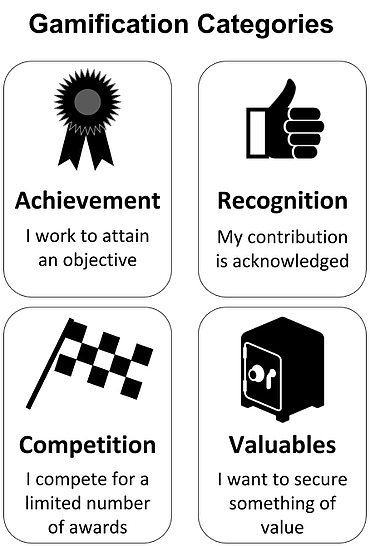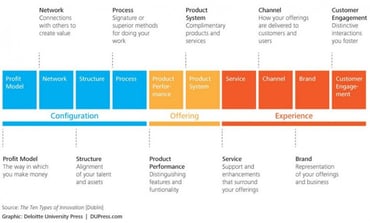We have seen an incredible rise of platforms that have become part of our everyday lives. Whether it's Apple, Google, eBay, Amazon, Android, Facebook, Microsoft, Alibaba, Salesforce, Uber, Airbnb, PayPal or one of the many others, they all have become some of the hottest companies that consumers value. These companies have built out their businesses on powerful platforms that drill down on what we value and allow us to connect.
The big questions for many companies that simply sell products are: can they benefit from making changes in these platform models and how do they go about it? Is the stand-alone product model breaking down? Do the more traditional approaches to customers, those that are more supply sided, still serve their needs today?
Consumers have come to expect more
When any form of digitization is introduced, the expectations of the customer rise exponentially in the expectancy of service, engagement, response and support - this is increasingly becoming 24x7. A brand is continuously determined by the service and how it fits within the individual’s life. This is having a more connected set of components coming from technology, built into the value proposition.
This rising expectation has its roots in our appreciation for the connecting value of Facebook, Google, Apple or Microsoft. Our "need" for technology has grown in recognition that it can solve our personal problems and situations and is quickly becoming the norm of everyday life. Today the industrial company, selling traditional tangible goods, is expected to engage, listen, adapt, and offer ever-increasing tailored services to our personal needs. Do-it-yourself has become do-it-with-us; let's collaborate and let’s support each other on a more substantial journey of co-creation. This is where the platform comes in, the enabler in which you can build the exchanges.
We are seeing platforms transform the business landscape to ‘search for new growth’
There is an imperative to understand the whole meaning and implications of platforms. The business implications of platform management are significant because they have a transforming effect on all we do within companies. As technology continues to change the way we do business, we move from being internally directed to externally driven. There is the recognition that innovation does not occur inside, it occurs through collaboration, engagement and admitting that other people may have better ideas and possible answers. There are many people looking to combine their expertise into a new more radical design that increasingly meets the customers needs, which they could never be capable of on their own.
To understand where ecosystems and platforms fit within our corporate strategies, there are some well-respected voices discussing and predicting the rapid rise of the platform and what it all means in its implications and changes.
More and more people are asking constantly for platform understanding
Notably for me, I have been referring back to a number of these experienced voices, as well as recognizing several books and thoughtful papers discussing the platform phenomenon and how it is radically changing our business landscape.
For me, one of the most exciting voices on platform’s comes from Simone Cicero and his team at platformdesigntoolkit.com. This excitement from my side is the result of how they are planning to tackle this. They are creating the design tools for platforms and by extension, ecosystems. These come in highly visual formats, built on the canvas approach where they fully provide the toolkit, which you can download for free and a detailed user guide - providing their learning, growing depth in experience in workshops, masterclasses and consulting. They are increasingly focused on building stores around their thinking and are increasingly a great source of reference. Also a great place to start is to download their Whitepaper “From Business Modelling to Platform Design”. Currently, Simone is working on how they are going to evolve their platform design toolkit. They made an incredibly long way in a short time, but this partly reflects the dynamic, evolving nature of platforms that each business has to get its head around. You can listen to Simone on this podcast to gain some excellent background on his thinking and developments around platforms.
The book “Platform Revolution: How Networked Markets Are Transforming the Economy – And How To Make Them Work for You" is co-authored by three of the leading voices of platform management, these being Geoffrey Parker, a professor of engineering at Dartmouth College, Marshall W. Van Alstyne, one of the world’s foremost scholars of information business models and visiting scholar at the MIT Initiative on the Digital Econom, and Sangeet Paul Choudhary, an entrepreneur in Residence at INSEAD, who provides a great posting site from pipes to platforms. Each of them are bringing considerable weight of understanding and insights into Platform Management to gain a really sound grasp of the shift we are all moving towards.
Then, there is John Hagel, co-chairman of Deliottes Center for the Edge, who provided valuable insights and thinking on ecosystems and platforms with his colleagues through Deliotte University Press. One of my favourite references is the paper “the power of ecosystems”, which is part of a whole series discussing, “Business ecosystems comes of age”, a must-read for anyone wanting to work systematically through ecosystems and platform thinking. They suggest that “businesses are moving well beyond traditional industry silos and coalescing into richly networked ecosystems, creating new opportunities for innovation alongside new challenges for many incumbent enterprises”.
Furthermore, I recommend the works of Haydn Shaughnessy and Nick Vitalari. I would suggest different books, such as, "the Elastic Enterprise” on how enterprises scale and operate in a completely novel way, as well as one written just by Haydn “Shift: A Leader’s Guild to the Platform Economy”, and a range of posts to highlight different parts of the platform equation. Haydn continues to explore at the edges of platform thinking which I absolutely value, although it sometimes requires me to re-read his thoughts more than once, but hey, that's often happening on my own as well, according to some.
My last voice on all things about ecosystems and platforms is Bala Iyer, a professor and chair of the Technology, Operations, and Information Management Division at Babson College in Wellesley, Massachusetts, who recently wrote a paper “To Predict the Trajectory of the Internet of Things looking to the Software Industry” where he identified 34 platform providers, although he identified 2,000 in total. In this paper, Professor Iyer provides a terrific graphic laying out the IoT ecosystem, one that is a broadly distributed among the network of these providers who, most of them, are providing application programming interfaces, many of them are offering infrastructure, devices and platforms as their core, looking for others to connect and build their solutions on these platforms without the high levels of infrastructure investment cost. I’m presently looking to read more on Professor Iyer’s work, and we have been exchanging around the rapid number of platforms that are being created at present.
Each of these expert voices are great sources of knowledge, although they tend to revert to the software and technology-centric companies far more since this has been the source of platform understanding.
Industry is lagging but catching up in platform offering
There are growing voices on different aspects of innovation, which are being built through ecosystems and on collaborative platforms, more of which are coming from the traditional manufacturing and service industries. I can refer to these in my own joint site on ecosystems and platforms under https://ecosystems4innovating.wordpress.com/about/.
I chose to shift part of my business over to developing a certain knowledge expertise on ecosystems and platforms last year. There are so many changes occurring around collaboration it needed a dedicated focus. This is a part of the posted site above as it sets about explaining this evolving phenomenon. It's becoming a really big shift in innovation as this graph shows. When you start thinking about the ten types of innovation,those can be channeled onto platforms, in highly collaborative ways to cover off multiple types of innovation through platforms and ecosystem collaborations to meet customer needs.

Source : https://www.slideshare.net/lugtu/types-of-innovation-59505692
One catalyst within Industry is GE Predix
As of writing this, we are at the beginning of an emerging story as the CEO’s position has just changed as he invests $4 billion into transforming GE into a digital industrial company, with $1 billion invested in the Predix platform alone. GE has shifted its business model to be a premier digital industrial company. A crucial role in this is the Predix Platform, a critical operating system for the Industrial Internet (Industrial Internet of Things). It connects industrial equipment, data analysis, and delivers real-time insights. Predix-based apps are unleashing new levels of performance of both GE and non-GE assets through designing and responding to different customers, markets, and conditions that the machinery operates in.
Another company I follow with growing interest is Bosch, a main supplier into the smart era of mobility, cities, and homes and through their subsidiary, Bosch Software Innovation, are building a technology stack of IoT that is becoming, for now, a go to place for the industry. In my review “Bosch Software Innovations will drive your connected device business” you get a real sense of this. In an earlier post “Bosch: A Leading Platform Exemplar of Digitally Connecting", I outline some of the necessary details and put much into context, in order to understand why Bosch is becoming well positioned to connect "everything with everything". They are mainly developing this to align with the new manufacturing era which has been dubbed Industry 4.0 and the need to build multiple ecosystems. Bosch is offering different analytic applications, device management tools, and platform enablement for rapid deployment and device development that becomes designed to your specifications and needs on their platform, validated mostly by their own implementation and application.
Lastly, I want to touch on Asia as powerful catalysts leading the change. They are extending platform management and thinking in some very evolutionary ways. My main focus was on one special company so far, Alibaba, which is going more and more head to head with Amazon. In the post I wrote, “Where the physical and virtual worlds are blurring, thanks to Alibaba”, you gain a sense of how transformative they are becoming. They are so focused on building the fundamental infrastructure for modern commerce, presently comprising of marketplaces, payment, logistics, cloud computing and big data, collectively empowering businesses of all sizes to leverage the internet for their own digital transformation.
I read a report recently where there are about 450 providers offering a very fragmented market. But of course there are some substantial “biggies” that are covering the consumer market. If you break down the platform market into manufacturing, smart cities, energy, mobility, health, supply chain, retail, public services and many others, the use of IoT platforms is catching up with the consumer side. One real growth area is the platform start up where funding seems to be strong. Cisco investments are backing a number.
A useful report summarizing the present situation is from IoT analytics.com.

So, yes we are in the middle of this Platform Revolution
I recently read this and it's worthy to share it here as it does work really well for me on explaining platforms in a fairly concise way. It's by ING, Office for Experience Design 2016 being under a Creative Commons Attribution 4.0 International License. The full set of their insights does a good job of discussing not just platforms an the network effect, but aso ties these back into ecosystem thinking – again a good read and reference.
“The role of the platform is the creation of these connections. To this end, the platform facilitates an accessible, scalable and efficient network of users, services, devices and intermediaries to make the value exchanges happen. It is over this network that value is created, distributed, discovered and consumed. The complementary aspects of platform and network are key to any platform ecosystem business model.
Users of the platform may be consumers, producers or a combination of both at times. Whatever their role, they connect and interact with each other over the network using the facilities provided by the platform. Depending on the nature of the business model, participants may or may not be required to connect explicitly. Social networks often require explicit connections, whereas market places do not but match buyers and sellers on case by case basis. Users of a personal finances platform may not connect at all but still benefit by being benchmarked against comparable users.
The platform consists of core technologies, shared tools and services, and rules and standards that enable producers to create and share at scale with sufficiently low costs of distribution and transaction. It provides a set of interfaces for the participants of the network to communicate, interact and interoperate within the ecosystem.
This definition sits well with the generally accepted notion of “platform” as a product or technology that allows complementary, modular components be built on top of it. Well-known cases are product platforms (like VW’s MQB), industry platforms (like Intel’s x86 architecture) and cloud computing platforms (like Amazon Web Services).
Platform ecosystems often use the latter kind of platform. The platform’s job is to support the network comparably efficiently. This is not an unimportant task, but it just does not differentiate ecosystems in their evolutionary battles to the same degree as the networks does”
The 9 types of software platforms
In a great article by Platform Hunt, they identify and track the 9 types of software platforms.
Let me just quote a small part of this article:
“All platforms are not created equal. Google Search, Facebook, Amazon Web Services, Amazon Marketplace, Android, Uber, AirBnB, Waze, WeWork, Twilio and even Bitcoin are all platforms. At the same time, these platforms are very different in how they create network effects, interactions they enable, approaches to solving “chicken and egg” problems (do you build the demand side first or the supply side?), openness levels, growth dynamics, subsidies, competitive strategies and monetisation methods.
Building a successful platform is more about making the right trade-offs than it is about best technology. To understand these tradeoffs you must have a good grasp on what kind of platform you are building. We decided to help platform entrepreneurs understand these tradeoffs, find their role models and learn from numerous examples of other platforms.
We took a data-driven approach and analyzed 170+ platform businesses created by Internet giants, traditional companies and startups. Several iterations on the data produced nine distinct platform types that we introduce in this post:
- Technology Platforms
- Computing Platforms
- Utility Platforms
- Interaction Networks
- Marketplaces
- On-demand Service Platforms
- Content Crowdsourcing Platforms
- Data Harvesting Platforms
- Content Distribution Platforms
Platform Hunt is an open initiative aimed to help entrepreneurs build successful platform businesses. The list of 170+ (and growing) platform examples is open and is stored in a public Trello board at data.platform-hunt.com.”
Summing up where platforms sit in our present and future thinking or at least where they should
The goal of this post was to introduce platforms as I see them and provide a growing source of references and to encourage those of you who are interested to explore this topic even further.
Each platform has unique characteristics with a central effect being the presence and need for building the network effect. The more users engaged, the more increasingly dynamic it gets, offering a self-reinforcing cycle of growth. Platforms as they are today, digital in nature, capture, transmit and monetize data and connect this into the physical world.
Many platforms are transactional ones (Uber, Google, Ebay) but the ones that really hold my growing interest are innovation platforms, such that provide the technological building blocks for collaborators to come together and use this as the foundation to exchange and build increasing value as they form the innovation ecosystem, that expands our innovation potential in new ways.
It is building these complementary technologies, services and products that need to appeal to the customer. They connect and then provide the potential for greater seamless customer experiences. The push is combining transactional platforms with innovation platforms to give a more integrated platform.
The magnitude and impact of platforms is way too important to ignore it
To understand the implications of the magnitude of what the changing technology will bring and any decision to move towards a platform strategy, needs a deep understanding of all the consequences, risks, and investment costs, let alone in the different resources this will require.
This requires organizations to know what is cutting edge, what works for them and then working through the aligning of often complex IT systems, seeking higher levels of machine learning and investing increasingly in the future around advanced artificial intelligence. It is about exploiting technology that is appropriate to their and your strategic needs.
Platform management has formidable tasks in orchestrating, designing and developing clear and sound governance systems, along with clearly significant organizational capital to have the best chance to succeed.
The key takeaway is the huge implication for managers, when making the strategic and operating decisions, fully recognize that technology is central, it changes everything on how you plan and organize yourself. It forms many of the decisions on a platform strategy, its design and eventual business success. It changes organizational design, work flow, and how it has this increasing need to be orientated out into a connected world.












